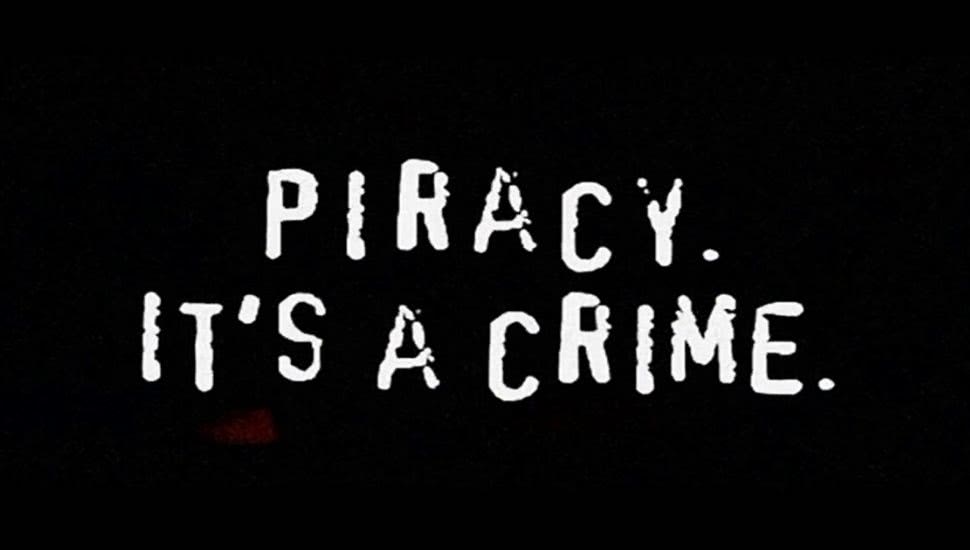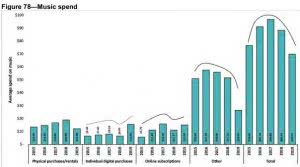Report: Aussies shifting from infringing copyrighted music

A new Australian consumer survey from the Department of Communications and the Arts (DCA) indicates that streaming has increased music consumption and anti-piracy moves by the entertainment industry has had an effect on copyright infringement.
The level of piracy by music consumers has been dropping steadily, says The Online Copyright Infringement Survey 2019.
Piracy has also dropped for TV programs, movies, live sport, video games, e-books and PC software, according to 2,463 Australians aged over 12 asked to record their online usage.
The number of those who reported consuming infringing online content halved, from 32% per in 2018 to 16% in 2019.
At the same time, the number of people who reported only consuming content lawfully was up – from 68% in 2018 to 84% in 2019.
It was the best result in five years, according to Paul Fletcher, minister for communications, cyber-safety and the arts.
“It is pleasing to see Australians increasingly turn to legitimately-sourced content. It is widely accessible and reasonably priced, which supports the continued growth and success of our creative industries,” he said.
The survey, collated by IPS Management Consultants, notes that the most effective way is to block sites.
58% reveal they simply give up when encountering a block. 37% look for a legal option and 7% look for similar paid but unlawful sites.
7% actively take steps to bypass the blocked site, mostly via VPNs (44%),followed by search engines (21%) and proxy websites (20%).
Also used are extensions (15%), Google Translate (13%) and changing the network proxy in browsers (13%).
What Would Make Infringers Stop?
The reasons given for turning to illegal digital services were they were free (32%), easy to use (27%) and quick (21%).
34% reckoned they’d do so if lawful services were cheaper and, according to 32% if all the content they wanted were on these.
27% suggested they’d do the right thing if it was made clearer what’s lawful and what’s not.
Either this 27% is particularly dim or the entertainment industry’s “don’t do it” messages are having a bounce rate.
7% state they will never stop using pirated content: 74% of these are male and 26% female
However the good news for the entertainment industry is that of those who use paid legal services, 34% are against illegal content.
Also going the legal path are 37% who reckon they are easier to operate and 34% find their quality is better.
Portrait of An Infringer
According to the DCA study, the 2019 consumption of unlawful content was higher in males (54%) than females (46%).
The demographics of infringers have changed significantly in the last four years.
In 2015, they made up 20% of the 35 to 44 group and 8% of the 12—15 demo.
Those aged 25 to 34 were less likely to infringe while those aged 45 plus had a greater proportion of infringers than overall content consumers in the same age groups.
“The 2019 data provides a different picture”, the study states.
“All the age categories from 12 years old through to 54 have a greater proportion of infringers than the proportion of content consumers.
“Those aged 55 plus represent 26% of content consumers and only 11% of infringers.”
In terms of income a year, piracy-friendly consumers are more likely to earn over $80,000 and least likely to earn less than $40,000.
They are employed full time (37%), part time (18%) or are students (19%).
The self-employed or retired are less likely to cross that line.
What music consumers will pay for a single digital track has remained static in the past five years.
Almost three quarters (73%) will pay 69 cents for a single track, a 2% drop from 2018 (76%).
64% would pay 99 cents, a decrease of 10% from 2018 (74%).
Just under half (49%) indicate that they would pay up to $1.19 for a single music track, a decrease from 58% in 2018.
These are interesting figures. Music subscription services have not kept up with inflation, and will feel the pressure to follow the lead of video streaming platforms as Netflix, who have already done so.

Consuming figures
How Music Consumption Has Risen
The Online Copyright Infringement Survey 2019 indicated that 80% of respondents download, stream or share online content (lawfully and unlawfully), up from 78% in 2018.
Streaming was the preferred method of use for music, movies and TV programs.
“As internet speeds increase and more Australians connect to the National Broadband Network, online entertainment is becoming a bigger part of people’s lives,” Fletcher said.
Consumption in music had the highest increase, from 43% in 2018, to 59% in 2019.
In comparison, video game consumption jumped from 20% to 20%; and movies from 47% to 52% while TV shows dipped from 15% to 14%.
According to the study: “There has been an increase in the downloading of music from 24% in 2018 to 31% in 2019.
“Streaming or accessing music has seen a significant increase from 38% in 2018 to 55% in 2019 and sharing of music has also increased significantly from 7% in 2018 to 14% in 2019.”
The proportion spent on physical music remains steady at 21%.
There was a rise in both individual digital purchases from 7% in 2018 to 9% in 2019 and also online subscriptions from 14% in 2018 to 25% in 2019.
This article originally appeared on The Industry Observer, which is now part of The Music Network.


































